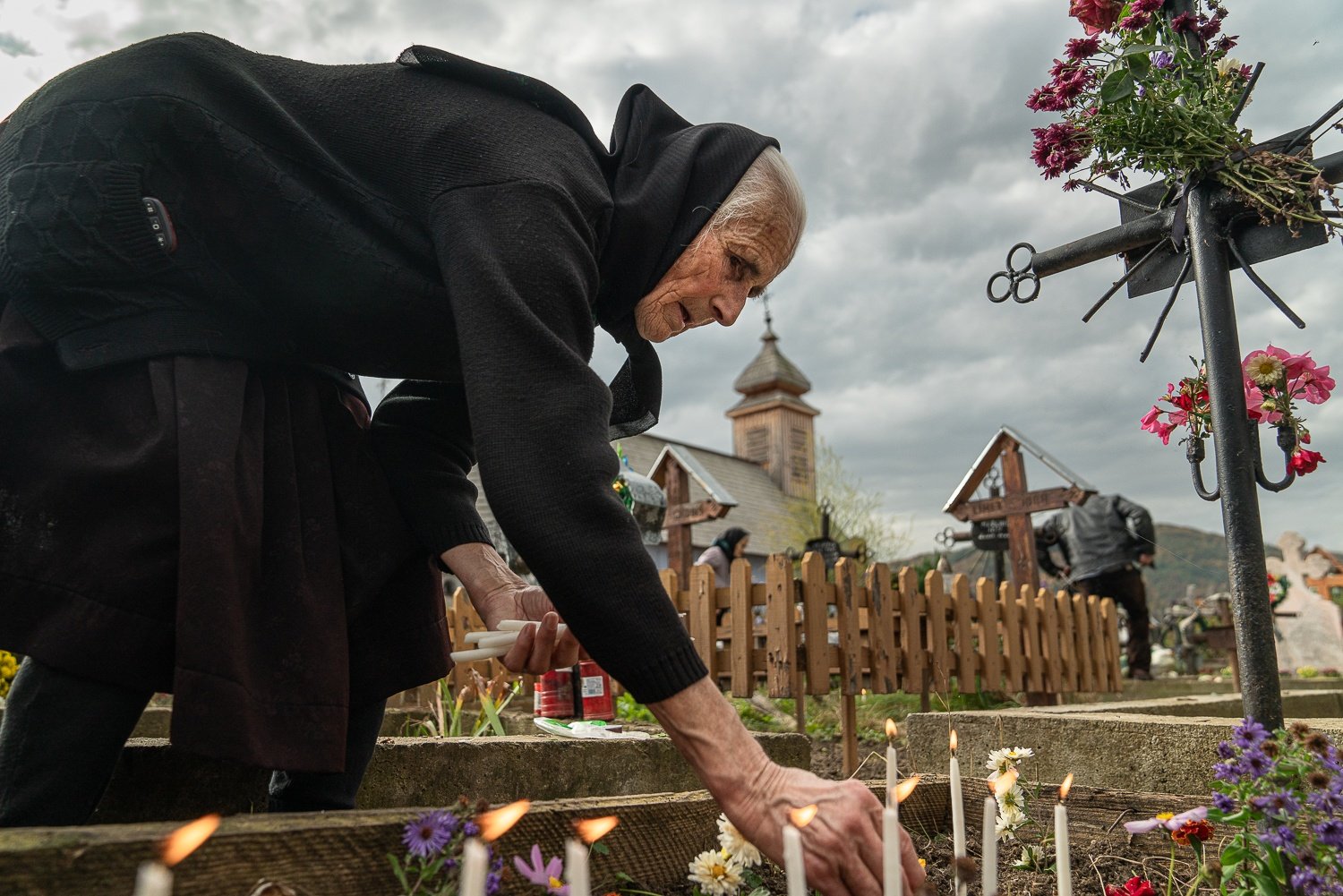Words & Photos: Mihnea Turcu
October 2024
During my childhood, which took place in the mid-80s, time seemed to stretch endlessly. I was lucky that my first steps in life found me in the countryside, where the spiritual world of the village was the source of all my experiences and feelings. In those years, things were still done the way our ancestors had taught, and we, the children, grew up almost by inertia, shaped by the wisdom and customs of generations before us. Among many other things, life in the countryside also meant a relatively early — and fortunately philosophical — encounter with the concept of death.
One of my first memories related to death is of my great-grandmother, whom, on a particular day, I found lying in a coffin, her hands on her chest, with a lit candle beside her head. She was over 90 years old, and nothing around her funeral felt sad. Everything happened in a natural rhythm, as if it came from long ago, like a quiet summer rain. The emptiness in my soul, and the thought that no one would play cards with me anymore, were soothed by my grandmother: “Don’t worry, we might meet her again someday, on the other side…”
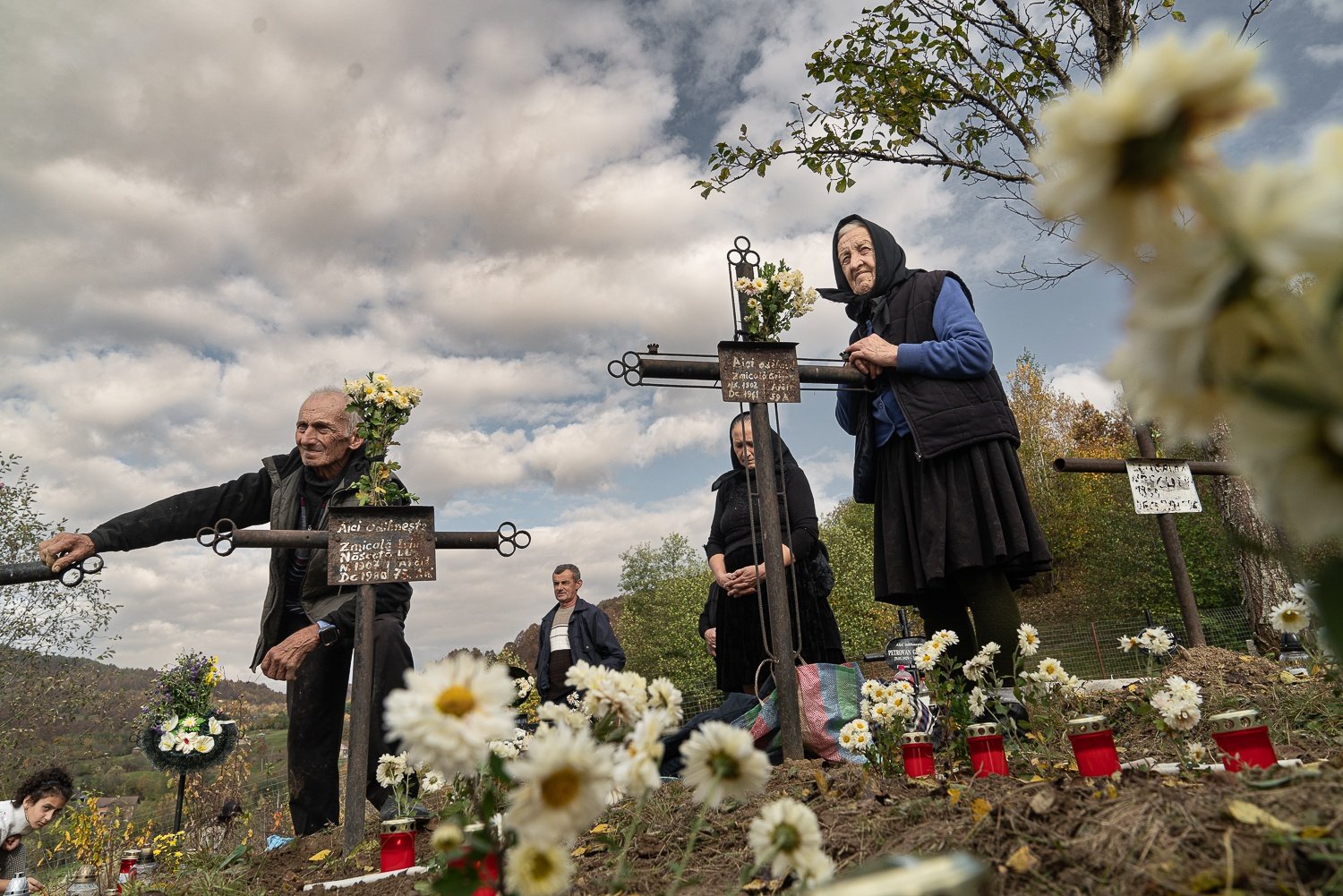
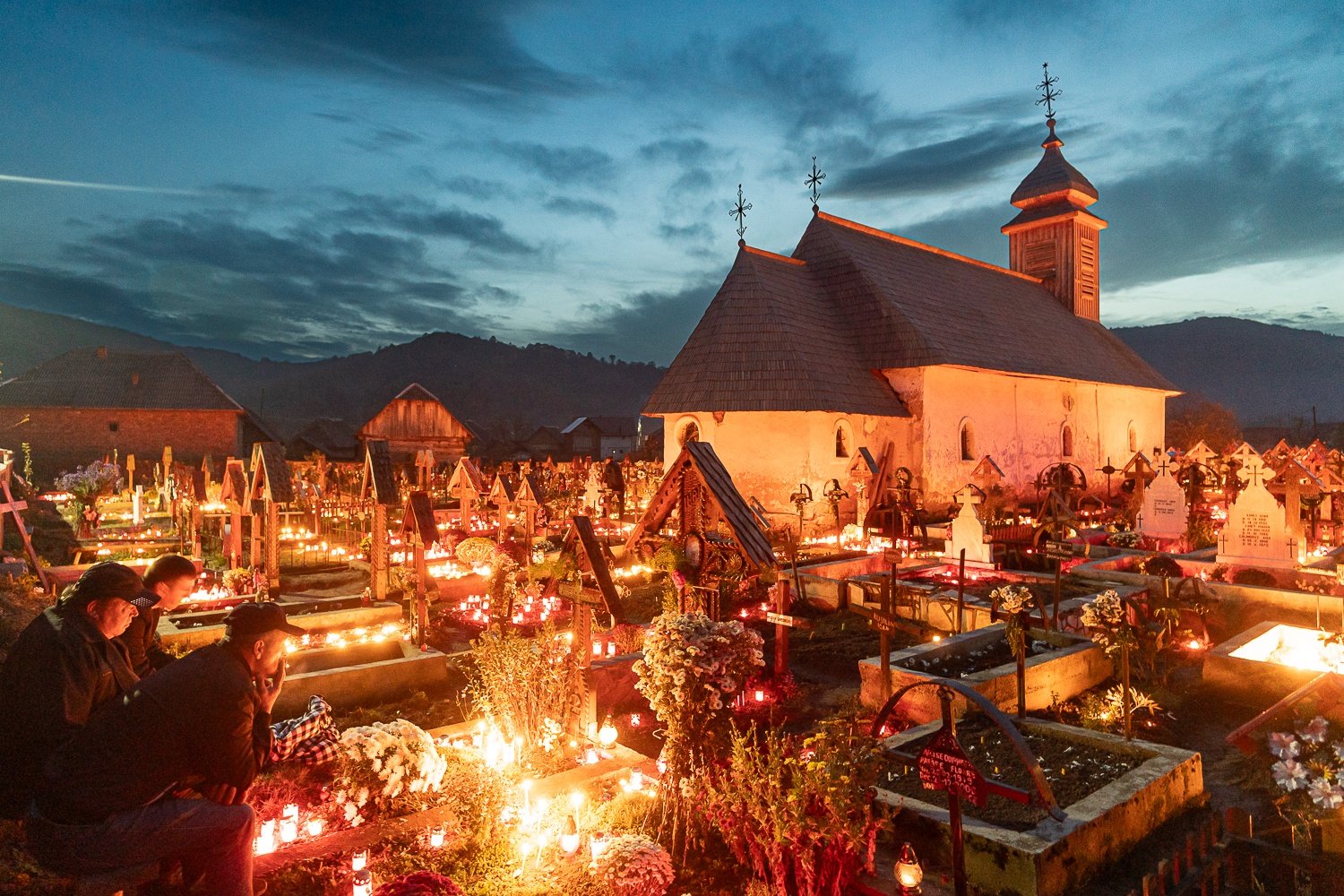
Sometime around the end of October and the beginning of November, the villages of Transylvania and Maramureș, celebrate Luminația: a day of remembrance for those no longer among us – the dead. Though the date is not fixed, it is set around the celebration of Saint Demetrius, with each village having its own custom in choosing the precise day.
On Luminația — also called Sâmedru in Maramureș — the cemeteries become real gardens of color and light. Preparations for this event start two or three days in advance, when fences, trees, and crosses are cleaned, and the earth on the graves refreshed.
In popular culture, each grave is seen as a miniature replica of a mountain, a sacred element considered a reservoir of life and a meeting place between the earthly and the celestial. From morning until late afternoon, graves are adorned with colorful flowers and dozens of candles in anticipation of the priest. A memorial service is held by each grave when he arrives, accompanied by the deacon and church officials. The living, the family, have the names of all their deceased relatives written on a piece of paper along with a bottle of wine (a symbol of immortality), and a loaf of bread (representing spiritual nourishment).
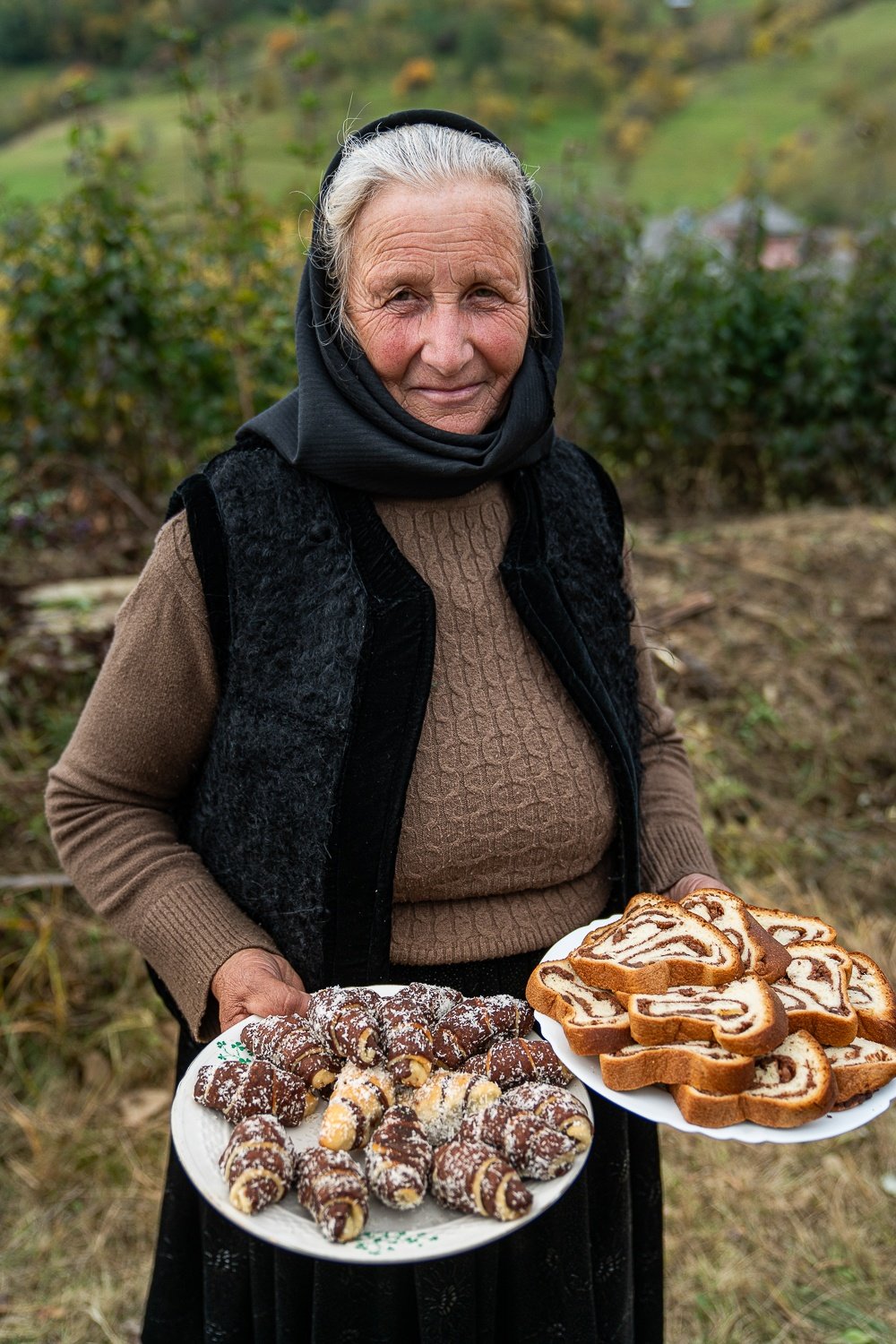
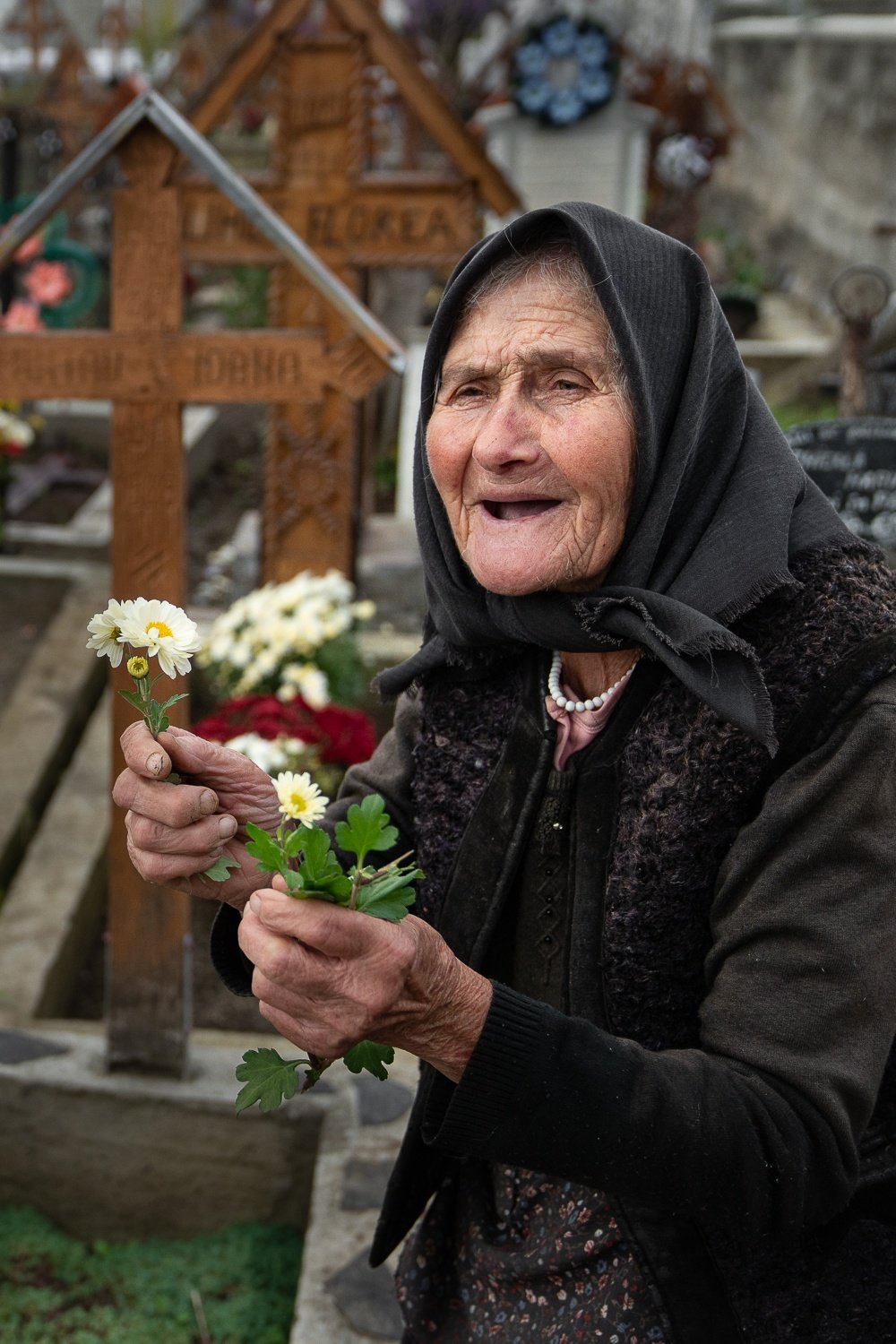
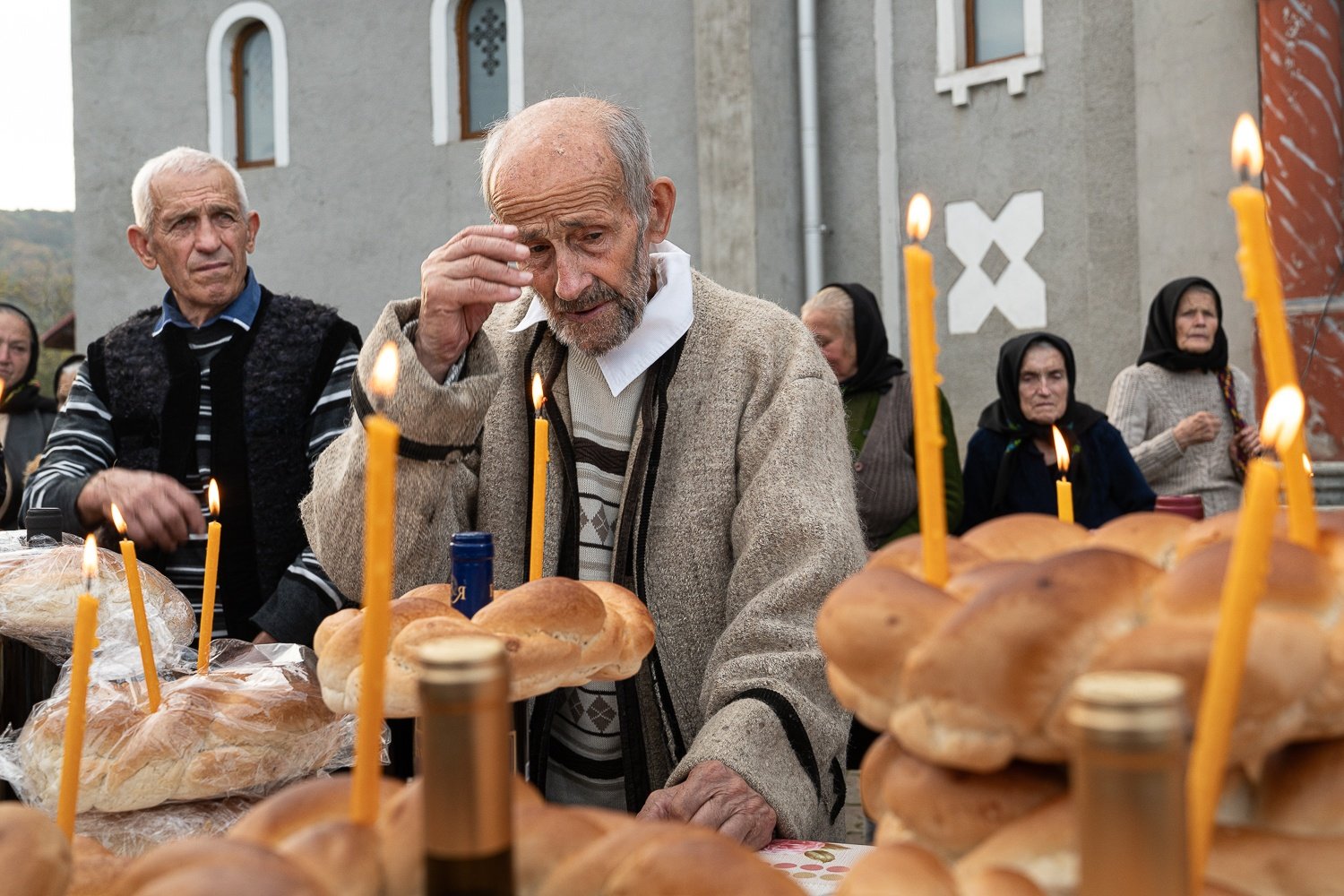
Bridging Two Worlds
Lighting the candle is the sacred moment of the whole event. This is when the bridge that connects life and death is born. The flame ignites the wick, melting the wax and creating light. The wax dissolves into the ether, and in this process, it releases light. The light makes “communication” between worlds possible, driving away the darkness of the dead’s world and attracting life from the world of the living. Lighting the candle is also a gesture that soothes the sense of absence and longing in people’s hearts.
After the memorial service, families prepare a meal with fasting dishes — cabbage rolls with mushrooms, donuts, wine, and horinca (a type of Romanian brandy). In popular belief, a richer meal signifies a more profound remembrance of the dead, and the food shared on this side will sustain them longer in the world beyond.
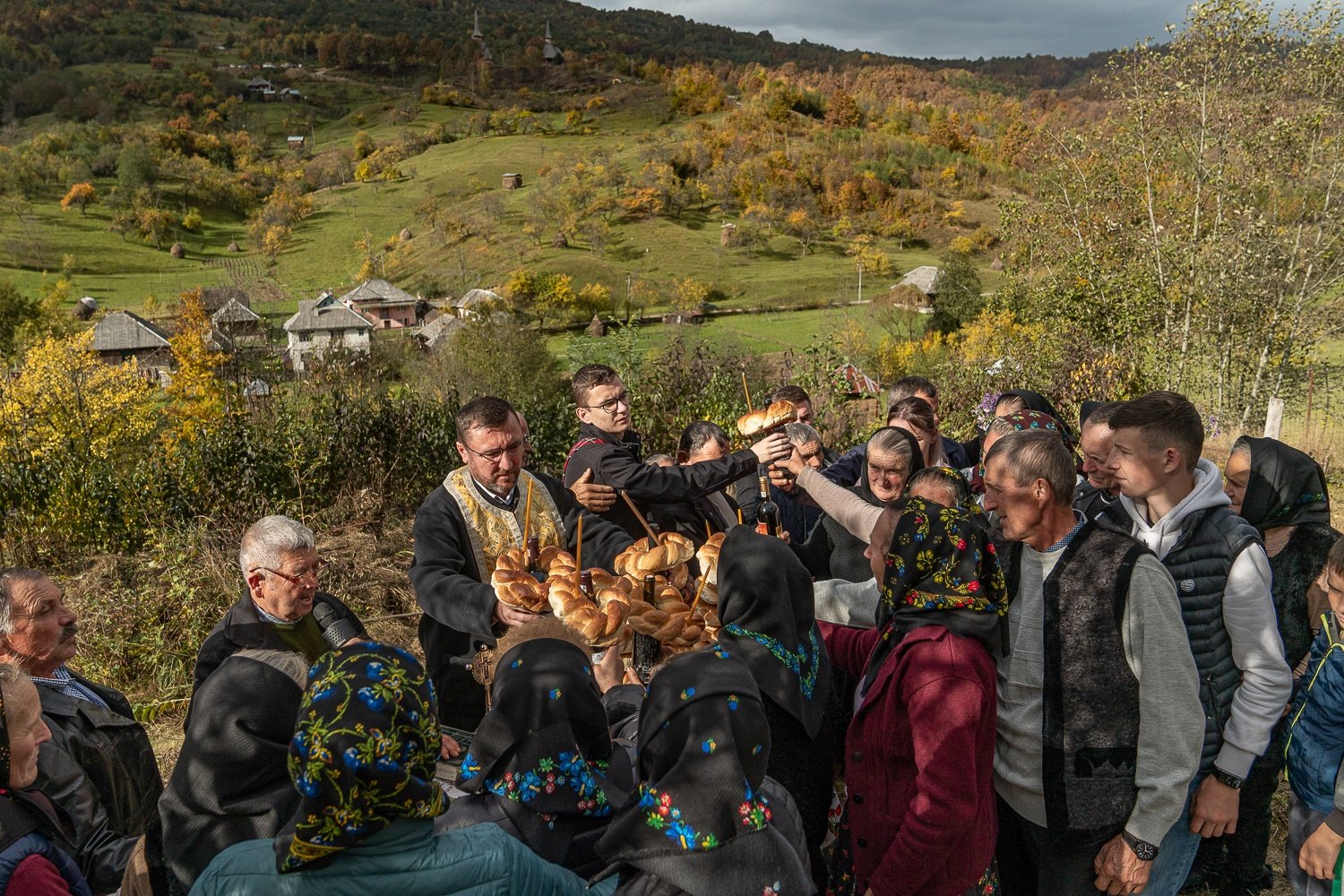
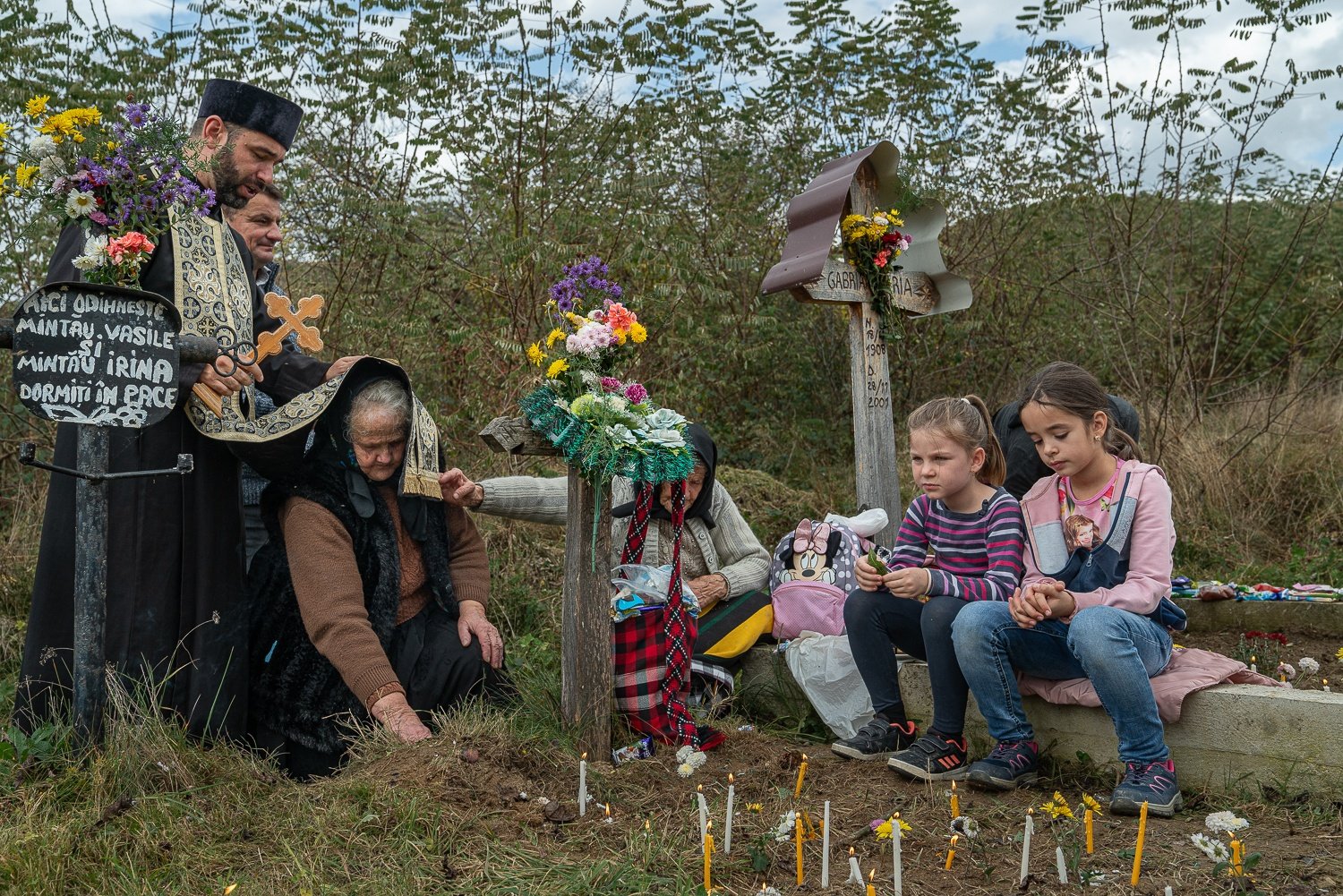
During all this time, joy is also present among the graves, as groups of children wander from one to another, filling their bags with sweets for the weeks ahead. The cemetery, a sacred place in the village, thus becomes, for a few days each year, a place of communion, redemption, and celebration. And in the ever-fading light of sunset, the candles bring the graves to life once more, returning them to the village’s stage of life.
What is the value and significance of these ancient celebrations after several decades of scientific evolution and globalization? It is up to each of us to decide and interpret. However, to understand the spiritual life of the village, knowing these customs is essential.
On a personal level, and strictly referring to my own values and perceptions, living with a constant awareness of the end — of death — can only intensify the perception and importance of the present. After all, death, at least as we have understood it so far, has been, is, and will be the only certainty. For me, it is extremely difficult to believe that from energy, vibration, and feeling, we all transform into… nothing?
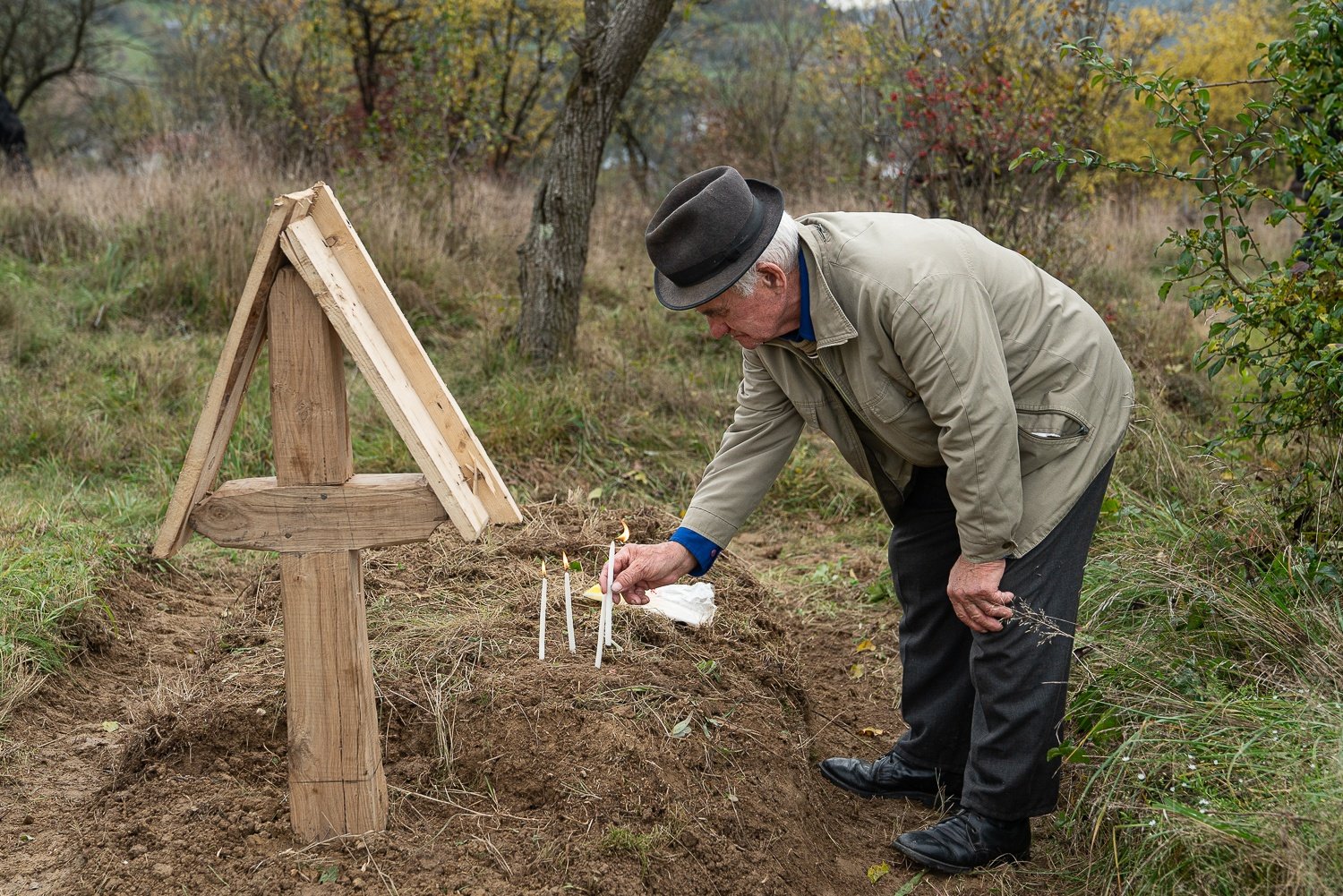
Some thoughts and ideas were inspired by Corina Isabella Csiszar’s beautiful article, “Illumination at Oncești.”
